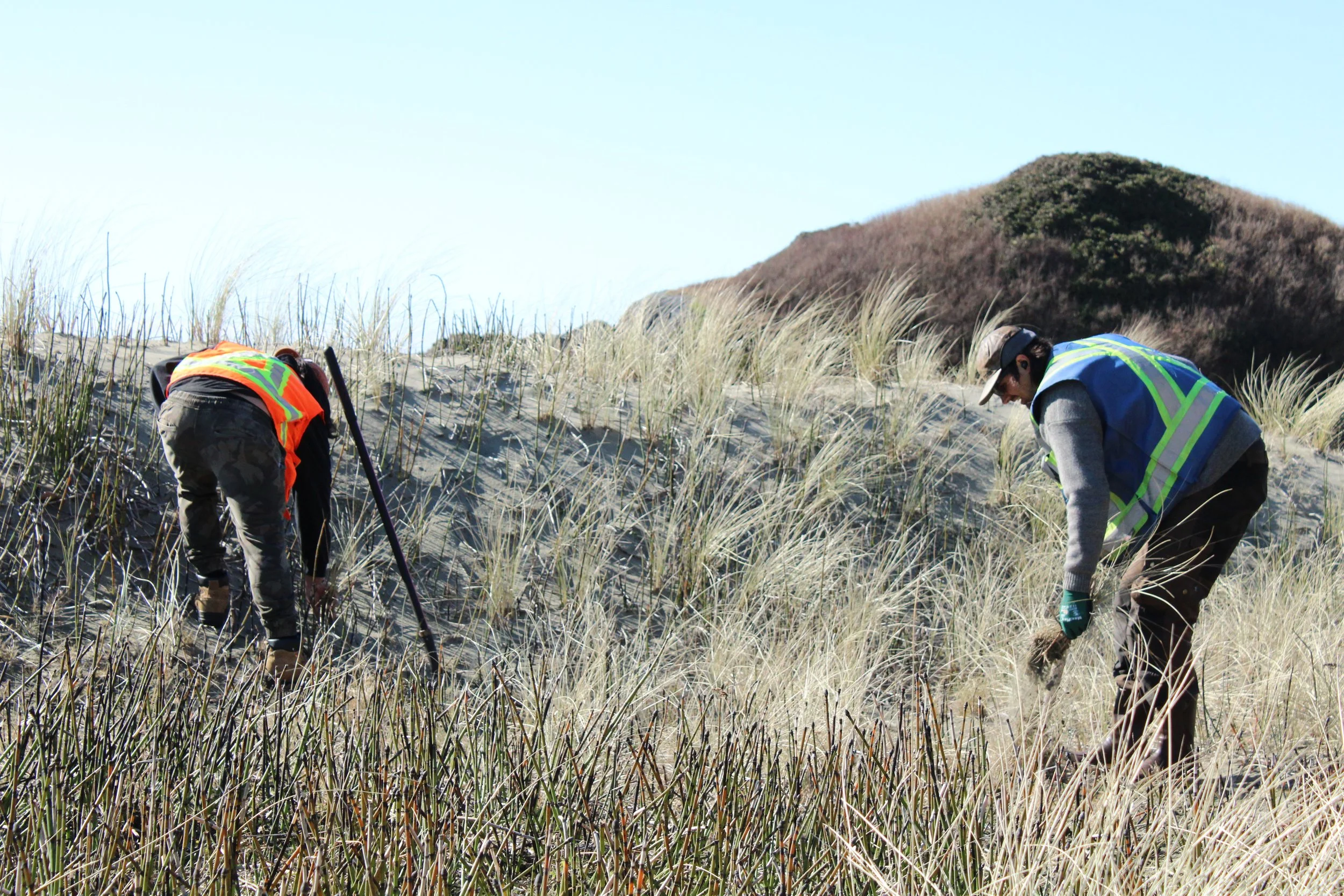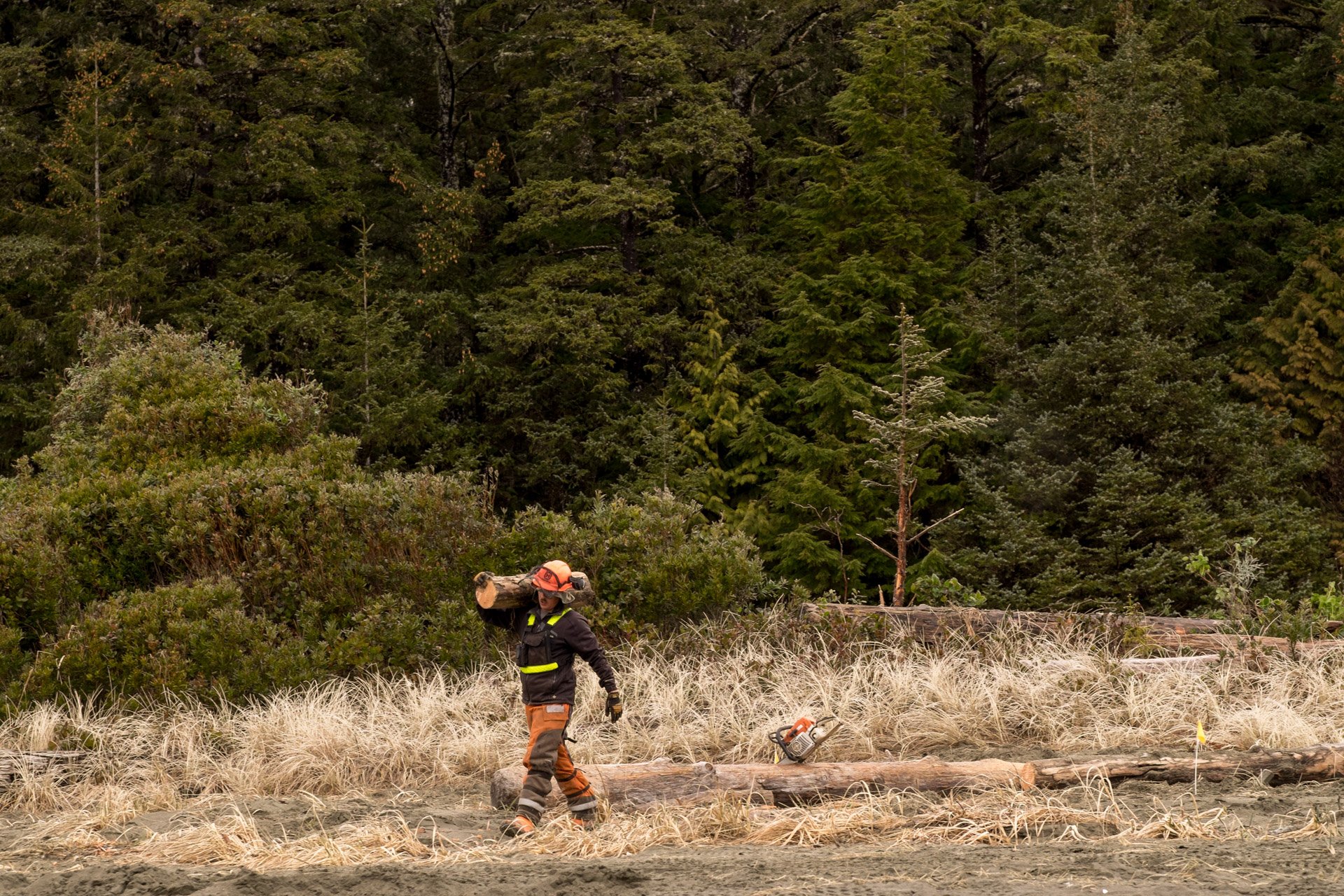This restoration work takes place within the hahuułi of ƛaʔuukʷiʔatḥ ḥawiiḥ (traditional territory of Tla-o-qui-aht First Nation’s hereditary chiefs).
Background
The largest concentration of sand beaches and dunes on Vancouver Island are located within the Pacific Rim National Park Reserve.
Since the 1970s, dune habitat at Schooner Cove has declined by around 30 per cent.
Coastal dunes are formed when winds blow sand off the beaches and into areas that are above the high-water line. These rare ecosystems are home to a variety of organisms that have evolved to live within them.
While west coast sand dunes don’t have a direct correlation to salmon, Redd Fish is guided by the Nuu-chah-nulth principle, His-shuk-nish-tsa-waak (everything is one).
By offering open spaces for animals to seek refuge, forage and travel through, dunes play a role in the overall function of west coast ecosystems.
“Parks Canada has a mandate to ensure that the natural and cultural resources and Canada are preserved for future generations,” said Mike Collyer, Pacific Rim National Park Reserve’s dune restoration project lead.
Collyer said that greater biodiversity contributes to greater resilience, which may be important for ecosystems to persist under changing climate conditions.
Summary
When Parks Canada recognized that invasive grasses (Ammophila arenaria and Ammophila breviligulata) were becoming a serious threat to the coastal sand ecosystems within the Pacific Rim National Park Reserve, they began working on removing the plants and restoring the habitat in the late-90s.
These invasive grasses are very good at capturing sand blowing off the beaches and form extensive root systems that help them to stabilize the upper beach (foredune) habitats, preventing erosion. Without sand blowing off the beaches, other vegetation, such as conifer trees, are able to grow and further reduce sparsely vegetated dune habitat that many rare species depend upon.
Increases in the abundance of driftwood on coastal beaches associated with the forestry operations over the last century has also contributed to the stabilization of foredunes. This has resulted in a decrease of sand and nutrient flow into the back dunes, accelerating the succession of the habitats to forest ecotypes.
Redd Fish first partnered with the Pacific Rim National Park Reserve and Tla-o-qui-aht First Nation in March of 2017 to carry out restoration on a section of the Schooner Cove sand dunes. By September that same year, the restored areas were home to 55 new silky beach plants and 746 new pink sand-verbena plants. This was a great success in the recovery of these endangered species and demonstrates that if habitat is restored, these species will quickly make use of it.
Since Redd Fish partnered with Parks Canada on this project, volunteers have been engaged annually to maintain the restored habitat by removing any grasses that have re-established. These efforts came to a sudden halt in 2020 with the emergence of COVID-19. Without maintenance efforts, invasive grasses and a community of hyper abundant horsetail and invasive hairy cat’s-ear has re-established in the restored areas.
Beginning in 2021, further efforts and Parks Canada resources were allocated towards restoration of the Schooner Cove sand dunes. Redd Fish successfully won new contracts with the park to help maintain the areas restored in 2017.
Research & Monitoring
Ongoing restoration work is needed to address the establishment of a community of scouring rush (Equisetum hyemale) and invasive hairy cat’s-ear (Hypochaeris radicata) within areas that were restored in 2017. If not addressed, this community will alter the state of the soil and reduce natural sand transport.







